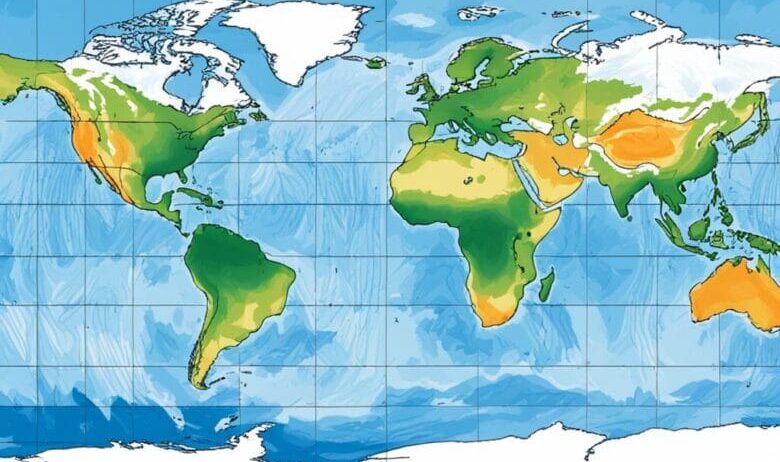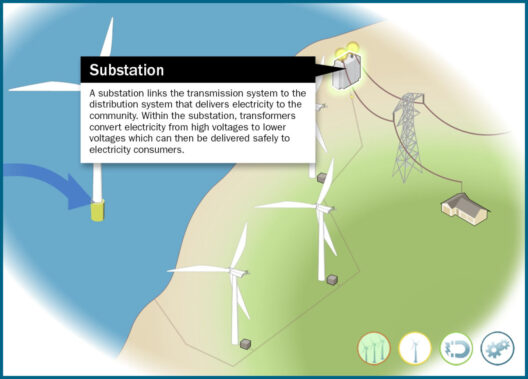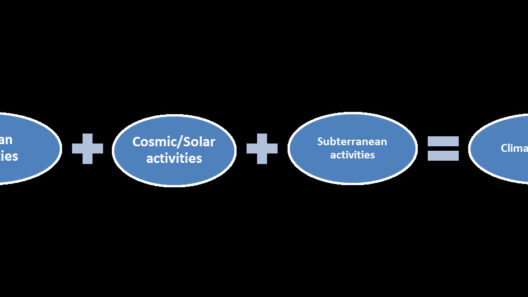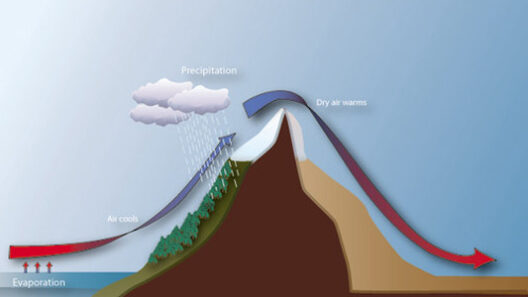Latitude serves as a pivotal determinant in shaping climate patterns across our planet. This geographic concept, while seemingly straightforward, unveils a complex interplay of atmospheric behaviors, oceanic currents, and ecological consequences. The influence of latitude on climate not only affects weather patterns but also dictates the types of vegetation and wildlife that can thrive in various regions. Understanding how latitude shapes our environment can deepen our appreciation for the intricate balance of life on Earth and inform our conservation efforts.
At its core, latitude is a measurement, defined as the angular distance of a point north or south of the equator. This all-important line divides the globe into distinct climatic zones that experience varying levels of sunlight throughout the year. As Earth rotates around the sun, different latitudes receive differing intensities of solar radiation, leading to the diverse climate phenomena we observe.
The connection between latitude and climate unfolds in layers, revealing fascinating dynamics that influence our daily weather, seasonal changes, and long-term climate patterns. Delving into this relationship allows for a broader understanding of global climate change, the necessity of sustainable practices, and the existential threats faced by various ecosystems.
**The Equatorial Zone: A Hotbed of Biodiversity**
Located near the equator, the equatorial zone is characterized by consistent high temperatures and abundant rainfall. Here, sunlight strikes the surface almost directly, resulting in minimal seasonal variation. This omnipresent warmth and moisture create an ideal environment for lush rainforests, which are home to an astounding array of flora and fauna.
The biodiversity harnessed within these ecosystems is vital not only for ecological health but also for human well-being. Rainforests act as significant carbon sinks, absorbing vast quantities of CO2 and thus playing a crucial role in mitigating climate change. However, deforestation and other human activities threaten these regions, underscoring the urgency for conservation efforts. The equatorial climate demonstrates how latitude directly influences biological productivity, shaping the very fabric of life on Earth.
**Temperate Zones: A Dance of Seasons**
As one moves away from the equator, temperate zones emerge, marked by a sequence of changing seasons that punctuate the year. These regions, generally located between 30° and 60° latitude, experience a blend of warm summers and cold winters. The tilt of the Earth’s axis results in varying day lengths and sunlight intensity throughout the year, creating the ideal conditions for diverse ecosystems ranging from deciduous forests to grasslands.
This variability in climate leads to rich agricultural opportunities, as different crops can thrive in the varying conditions presented by each season. However, temperate zones are not immune to climate change. Alterations in seasonal weather patterns can disrupt agricultural cycles, affecting food security and local economies. Understanding the delicate balance of temperature and precipitation in these regions emphasizes the need for adaptive strategies to mitigate climate impact.
**Polar Regions: The Harsh Extremes**
At the opposite end of the latitudinal spectrum lies the polar regions, defined by their extreme cold and prolonged periods of darkness. These areas experience inverted conditions compared to the equatorial zone, with long, frigid winters and brief, mild summers. The polar climates are marked by unique adaptations among flora and fauna, with species evolving to withstand the harsh elements.
The polar regions are often the first to exhibit the effects of climate change, including melting ice caps and shifting wildlife populations. These changes raise alarm bells—what happens in these distant, frigid areas has far-reaching global consequences. The loss of ice significantly contributes to rising sea levels, threatening coastal communities and ecosystems across the globe. Observations in the polar climate underscore the interconnectedness of our global climate—latitude may separate various regions, but the consequences of environmental change unite them.
**The Latitudinal Gradient: A Continuous Spectrum of Diversity**
The interplay of latitude and climate is not merely a binary relationship but exists along a continuous gradient. This diversity means that small changes in latitude can yield significant alterations in climate and environmental conditions. Coastal areas, for example, often experience milder climates than interior regions, due to the moderating effects of ocean currents. Cross-cutting boundary roles establish unique microclimates influenced by local topography and geographic features.
Understanding this latitudinal gradient is crucial for conservationists and policymakers alike. It informs strategies for preserving biodiversity, managing natural resources, and adapting to climate change. Researchers explore how species distributions and ecological relationships vary with latitude, further revealing the intricate tapestry of life that spans our globe.
**Concluding Observations: A Call to Action**
The profound influence of latitude on climate across the globe presents both challenges and opportunities. The stark contrasts from the equatorial jungles teeming with life to the icy barrenness of the polar land masses highlight the necessity of dedicated conservation efforts. As humans continue to navigate the complexities of climate change, a deep understanding of how latitude shapes our world will be invaluable.
Protecting our diverse climates and biomes not only preserves vital natural resources but also ensures the future sustainability of the planet. Climate action must be informed, comprehensive, and inclusive, harnessing the knowledge garnered from the study of latitude and its far-reaching effects. In joining together to safeguard our planet, we uphold our responsibility as stewards of the Earth, facing the challenges of a changing climate with vigilance and determination.







